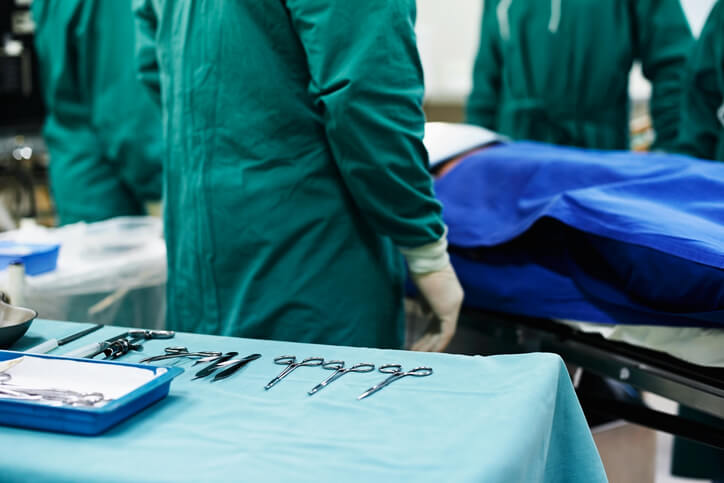Bair Hugger is a forced-air warming device that helps surgery patients maintain normal body temperature in the operating room. Patients under anesthesia cannot regulate their body temperature, which can be a serious problem. That’s because anesthesia causes your body temperature to drop rapidly after it’s administered. Bair Hugger warming blankets surround patients with warm air during longer surgical procedures, such as total hip and knee replacements. This helps decrease hypothermia and cardiac arrest risks, as well as making patients feel more comfortable. However, several patients who developed severe infections after Bair Hugger surgery are now filing lawsuits against the device’s manufacturer, 3M.
5 Bair Hugger Facts Every Surgery Patient Should Know
Before you or a loved one undergo another surgery, here are five Bair Hugger facts you should know:
1. Bair Hugger’s inventor has spoken out against using the device.
Dr. Scott Augustine, an anesthesiologist who wanted to keep patients warm during surgery, invented Bair Hugger in the late 1980s. In 2010, he spoke out against the device, saying the warm air it generated could circulate throughout the whole operating room. This change in airflow during surgery can spread bacteria and increase the risk for serious hospital-acquired infections. This bacteria-contaminated air’s especially dangerous for orthopedic surgery patients getting new joint and hip implants or artificial heart valves.
2. A study published in The Bone and Joint Journal found forced-air warming devices increased deep joint infection risks.
The study investigated different patient warming devices during a simulated hip replacement and lumbar spinal procedure. The forced-air system moved non-sterile particles across the surgical site, allowing contaminants to enter the patient’s open incision. Researchers discovered “a significant increase in deep joint infection” when surgeons used forced-air warming devices. The study’s conclusion recommended using air-free warming rather than forced-air warming devices during orthopedic procedures, like hip and knee surgeries.
3. Infections diagnosed after surgical procedures with Bair Hugger may require costly surgery, medical care, and rehabilitation.
Tommy Walton and Dianne Dunn both developed infections following their hip surgeries. Due to the severity of each patient’s infection, they both have had more than twelve additional operations apiece. Walton stated, “Some of the days, I don’t remember anything. Then I would start to be coherent again and whoops, you got to go to another surgery.” Walton currently uses a prosthetic joint implant to maintain mobility. Sadly, Dunn will probably never walk again.
4. Tommy Walton filed the first Bair Hugger lawsuit in 2013.
Others have filed against 3M since then, including Barbara Libby of Minnesota and Kansas resident Timothy Johnson. Libby developed a deep joint infection after surgery involving a Bair Hugger device, and underwent seven additional surgical procedures. Her lawyers allege that air found in forced-air warming devices don’t comply with usual quality standards, causing Libby permanent pain. Johnson developed MRSA (a staph infection that’s resistant to most antibiotics) after his knee replacement surgery that included Bair Hugger. Afterwards, Johnson’s infection became so severe that his leg had to be amputated.
5. Bair Hugger lawsuits are underway against 3M, the device’s manufacturer.
None of the lawsuits have yet gone to trial or won a settlement, but the claims are steadily increasing. Most lawsuits claim manufacturer 3M failed to warn patients and hospitals about the dangers of circulating non-sterile air during operations. Additionally, 3M allegedly misrepresented their product as being safer than other, similar warming devices without conducting thorough pre-market safety tests.
What You Can Do
If you or a loved one developed a serious infection after undergoing orthopedic surgery, you may qualify for compensation. Get your free compensation evaluation today to see if you may be eligible for a cash settlement.
Once you’ve submitted your information, an experienced advocate will contact you to discuss your compensation options. Holding harmful device manufacturers accountable could help prevent more patient injuries in the future.
Mandy Voisin
Mandy Voisin is a freelance writer, blogger, and author of Girls of the Ocean and Star of Deliverance. As an accomplished content marketing consultant, mom of four and doctor's wife, Mandy has written hundreds of articles about dangerous drugs and medical devices, medical issues that impact disabled Americans, veterans' healthcare and workers' compensation issues since 2016.

